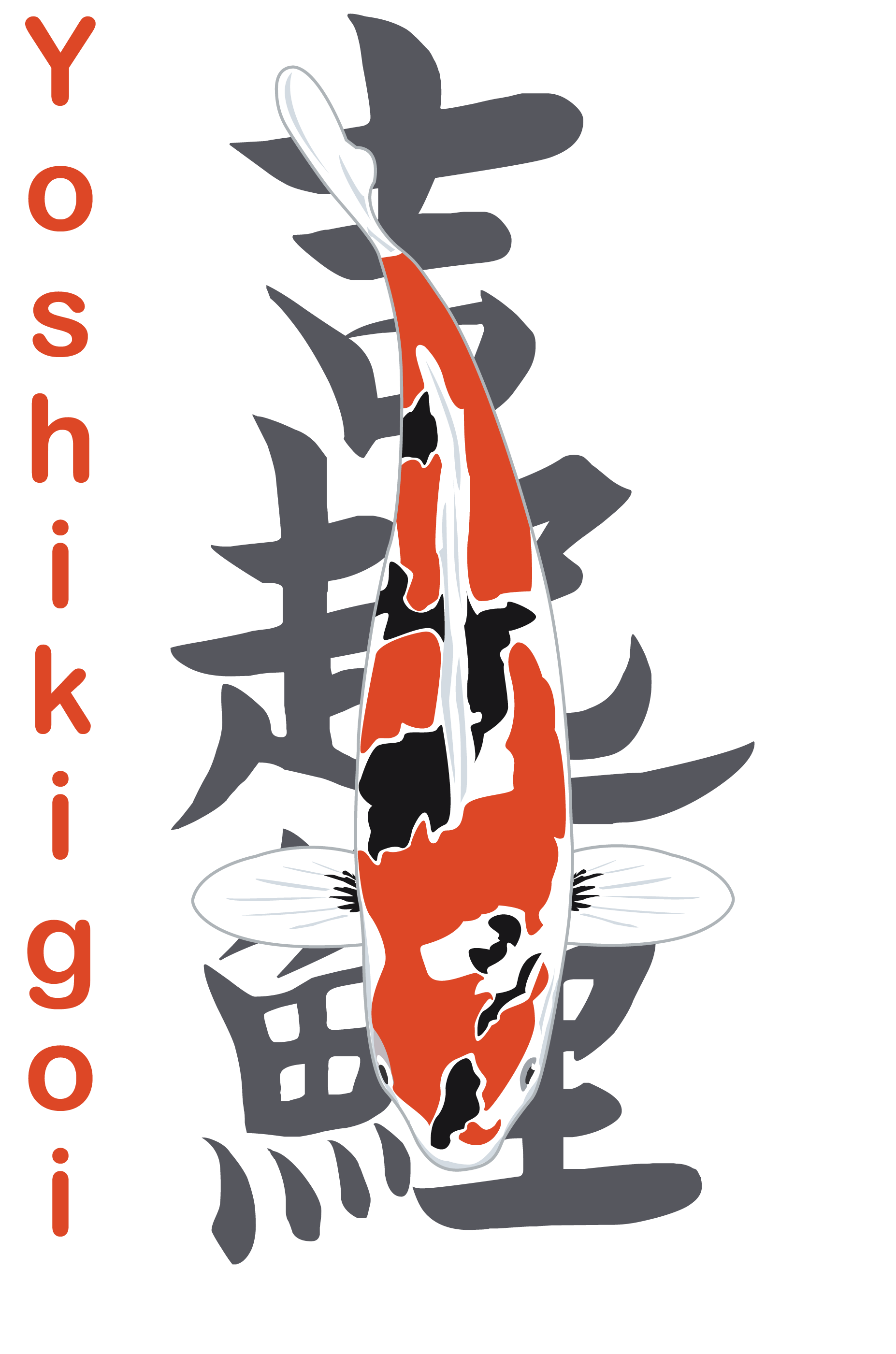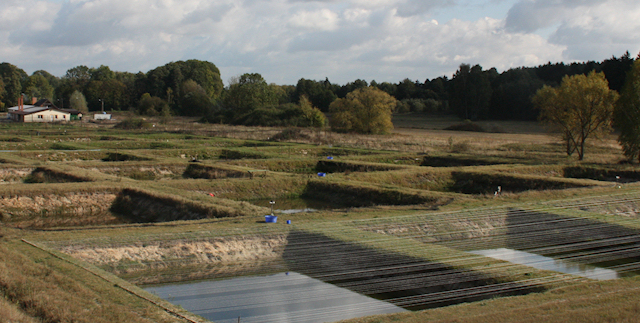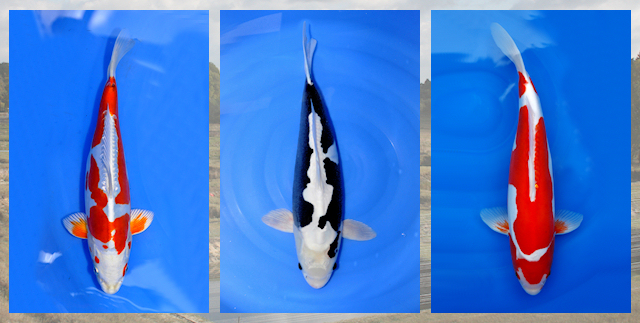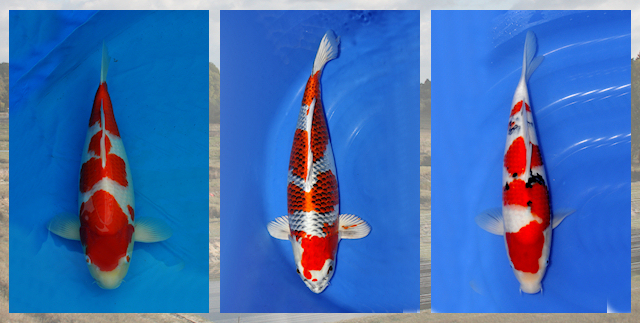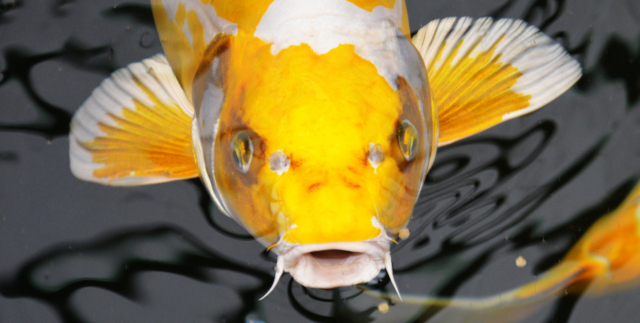Breeding of Kohaku.
The first variety most people think about is the Kohaku.
To breed Kohaku is easy. You just need to place two Kohaku together and you have Kohaku offspring. To breed high quality Kohaku, now that is a different story.
I will try to explain what I mean by that. When we breed with two Kohaku, what we get is White Koi
( Shiro Muji ) Red Koi ( Aka Muji ) and Kohaku. Nothing else. So to breed Kohaku you just need two parent Kohaku. The important thing from a Kohaku breeding is that we need to get enough offspring with some sort of a pattern.
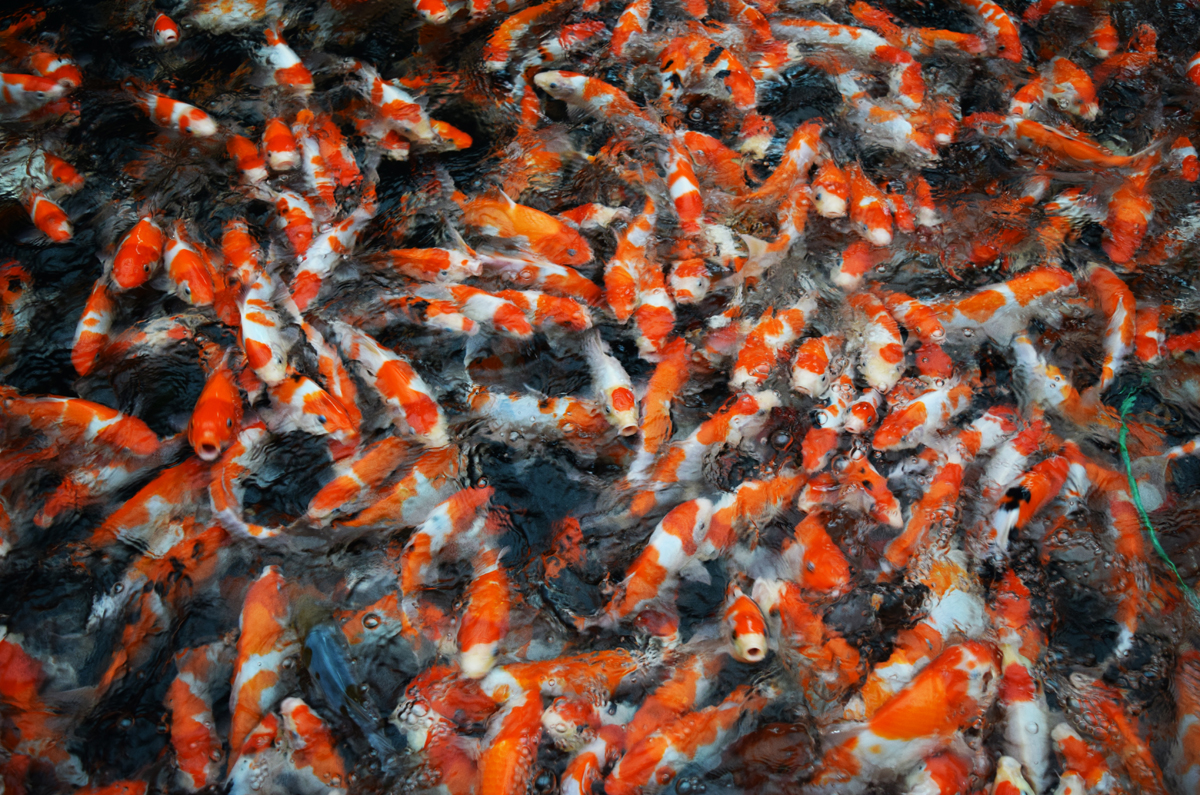
Step 1 In terms of quality, we need parent koi that have inherited pattern. Not a particular pattern that looks just like the parents, because this just won’t happen. Yes, we will find some Kohaku Tosai that will have similar patterns to the parents, but this is just coincidence. When we study the Tosai after all the selections have been done on a Kohaku breeding, we will see that we will have a lot with patterns that don’t look like the parents at all.
Step 2 is that we breed with parent Koi that inherited good skin-quality and colour. What is not widely known that the most important colour we need in a good Kohaku breeding is white, …..Not the red! Look at it this way, Take a red sticker and place it on a pure white sheet of paper, then take a second sheet of paper that is just a little bit more tinted to yellow or grey and place the same type red sticker on it. When you compare the two sheets of paper you will see that the red sticker on the pure white paper looks much deeper in pigment than the one on the other sheet. We know that the two red stickers are exactly the same, but they somehow look very different, and this is because of the base they are placed upon. White gives power to all other colours.
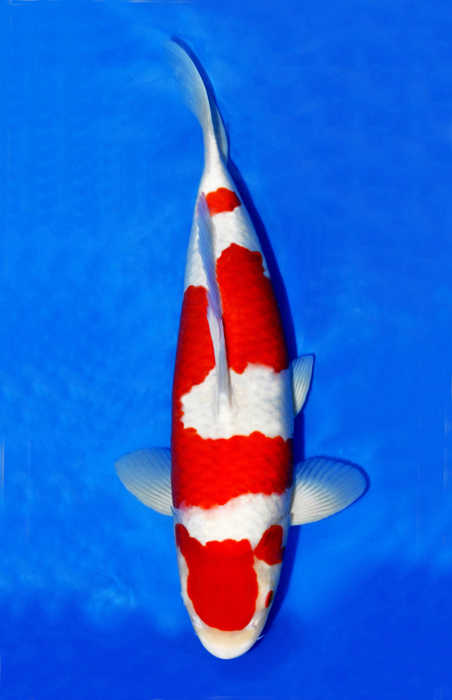
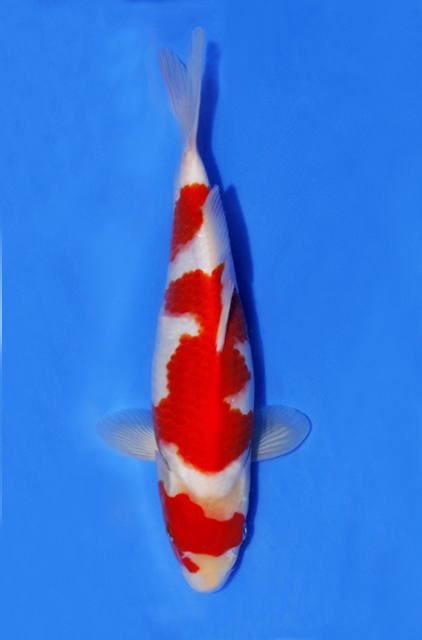
Step 3 is the shine of the skin.
Just imagine two sheets of paper, but with the exactly the same white colour. The only difference is that one is shiny and the other one is a bit more dull. Take two red stickers and place on each sheet one sticker. Again the same thing happens. The shiny-paper gives more depth and power to the colour. Another very important point is that Koi with good shine will stay looking young for much longer.
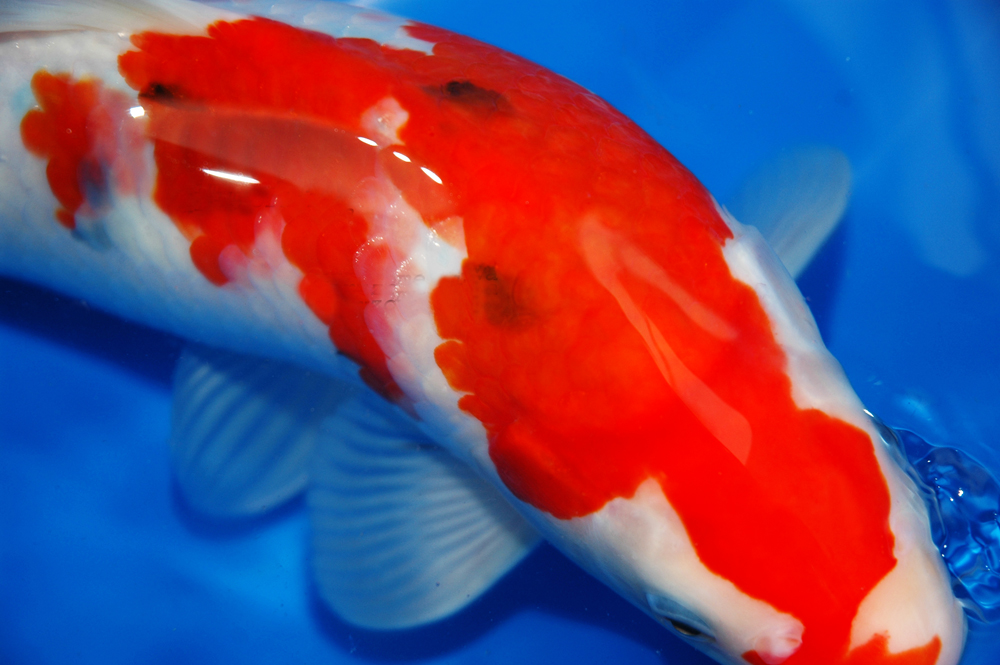
Step 4 is bodyshape. If we use parents of a lesser bodyshape, we will still breed some Koi with a better bodyshape than the parents. The problem is that we have already started with less quality in this respect. The few that we find from the breeding that have better bodyshape are the ones that have inherited it from the grandparents. We will always find a few of these in the breeding, but not in any great quantity. So the overall quality of the breeding is actually deteriorating not improving, and for future breeding we will already be starting with a lesser base from which to build. This is also the reason why the Japanese have in the past, introduced Magoi to get the size and bodyshape they wanted. The Magoi gave them the size and body for their future Koi, and they only kept the coloured ones that also had size and bodyshape. After a few generations of breeding the size and bodyshape was fixed within the new Kohaku bloodline, and after that, they began to once again build upon the Koi shine and colour. This sounds simple, but believe me it is not, the one thing is it takes is time.

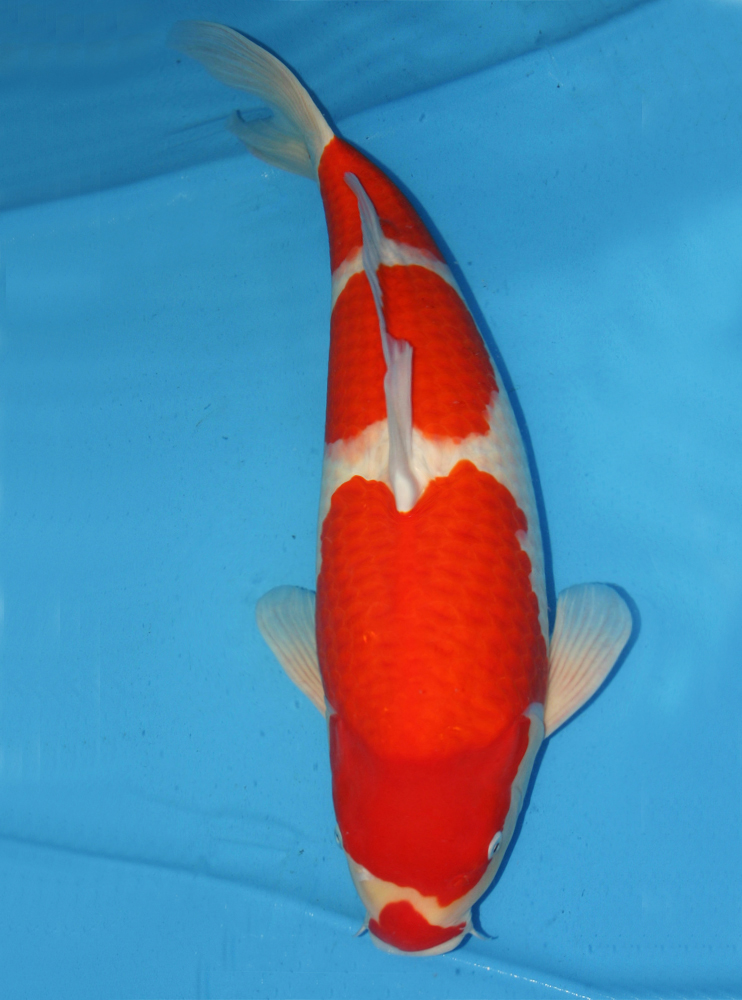
Some Kohaku parent Koi.
Step 5 are the fins.
If we breed from Koi that have pointy fins or small fins, it is almost certain that a lot of the resulting offspring will show this characteristic as well. Small tails and fins should always be avoided, the fins and tail need to be large and round.
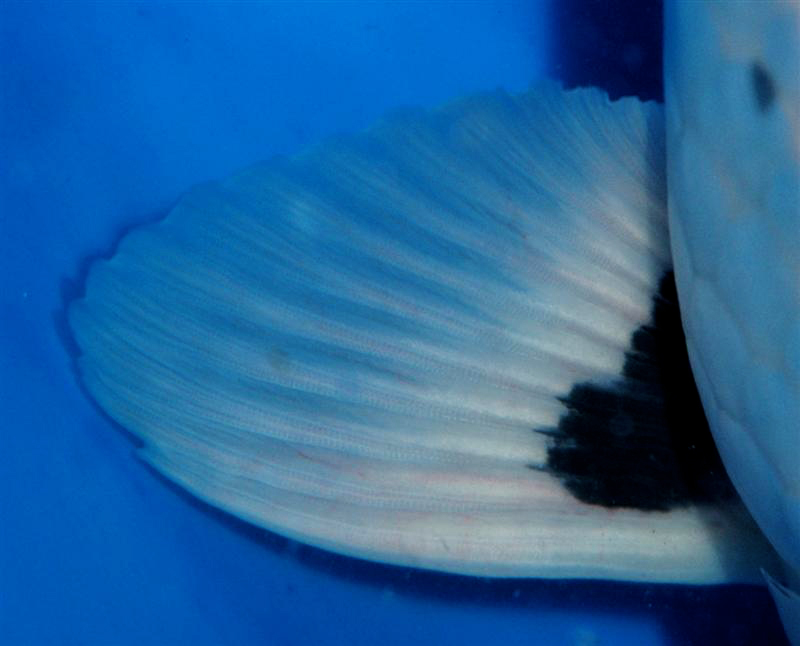
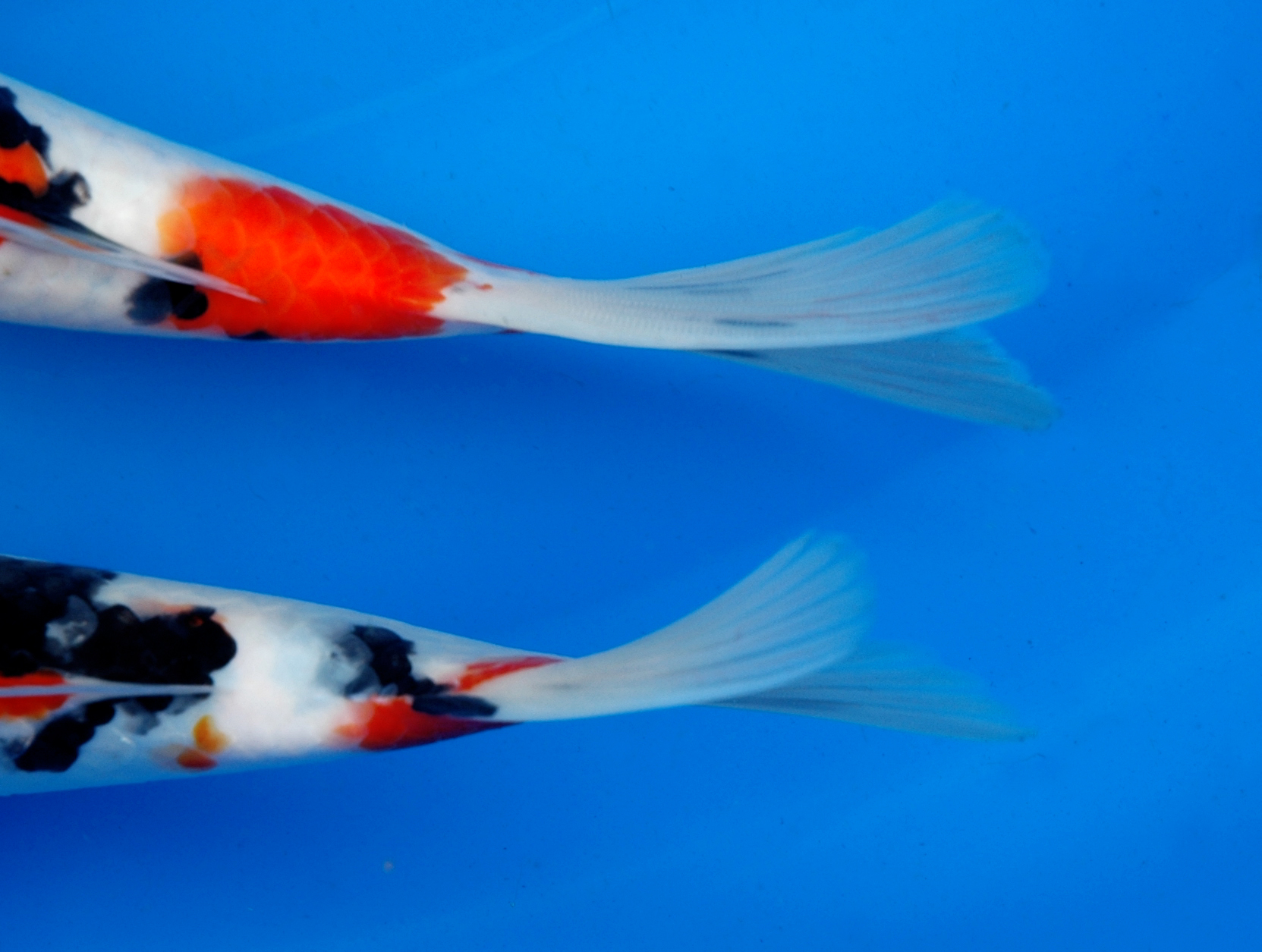
Next week we will discuss the importance of the ponds and the first selections.
